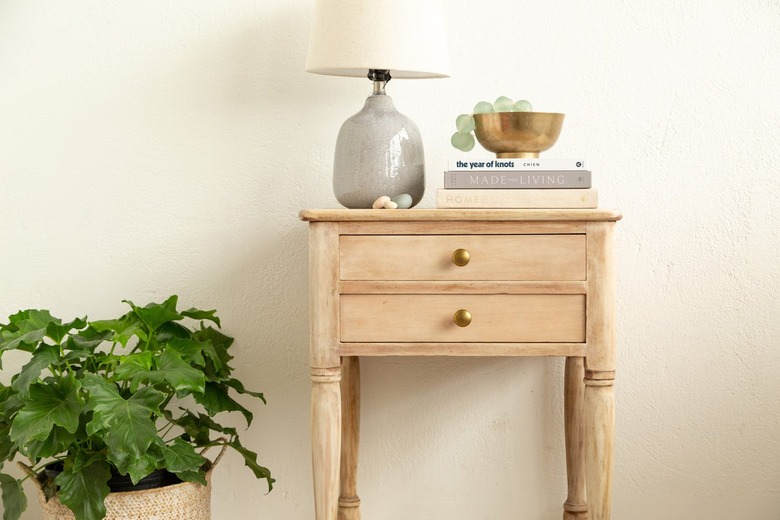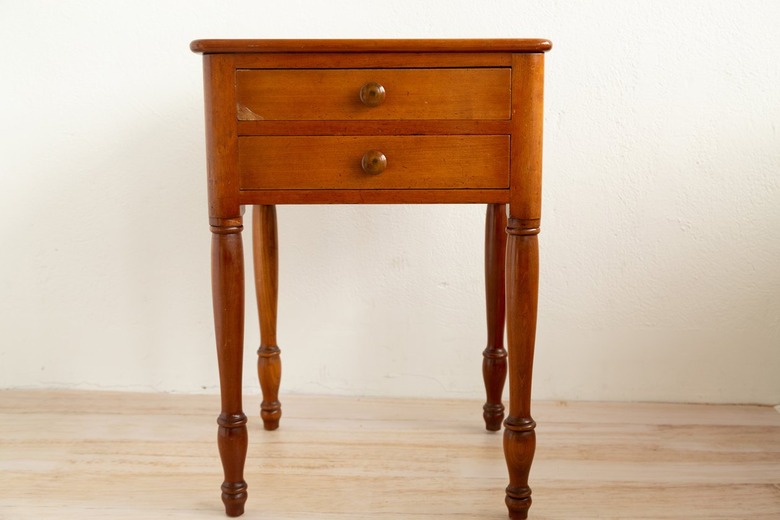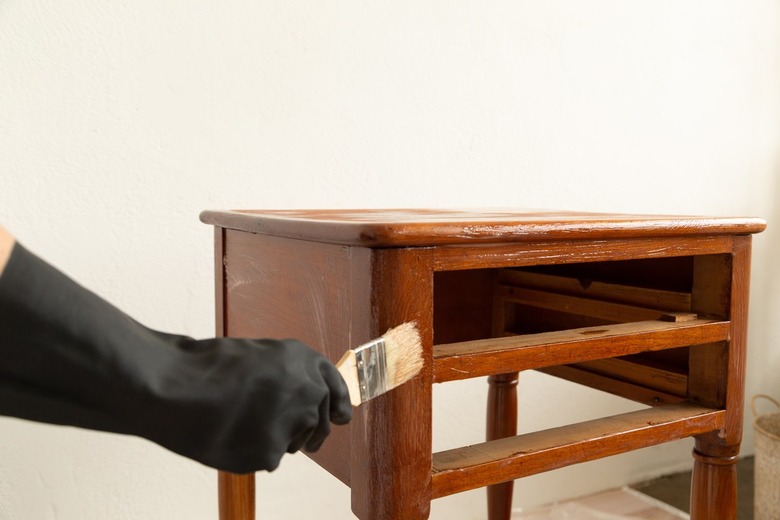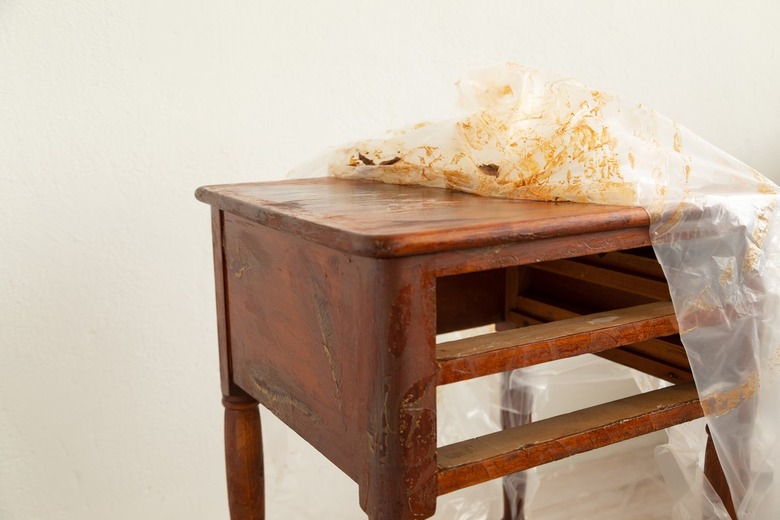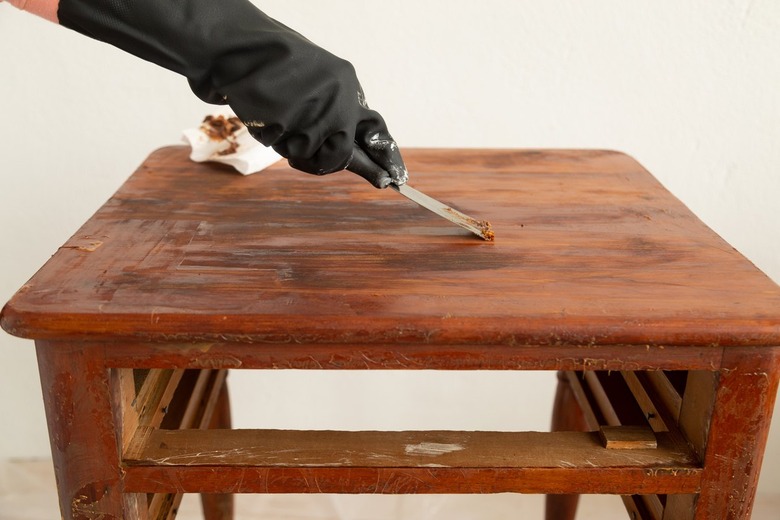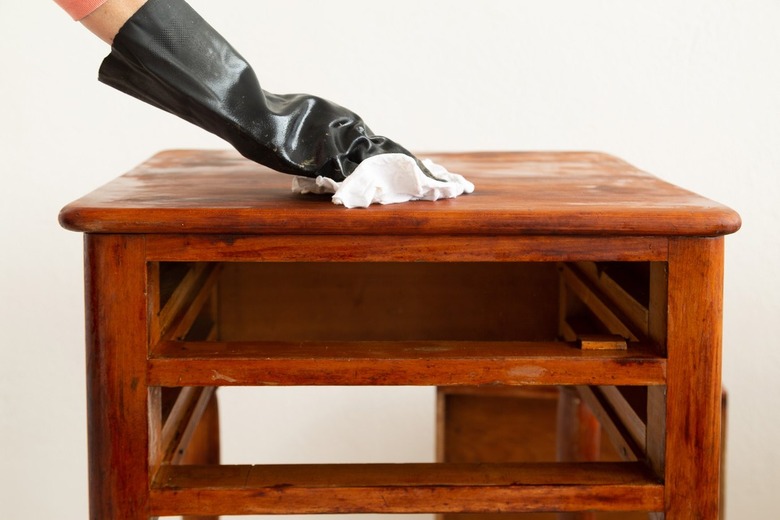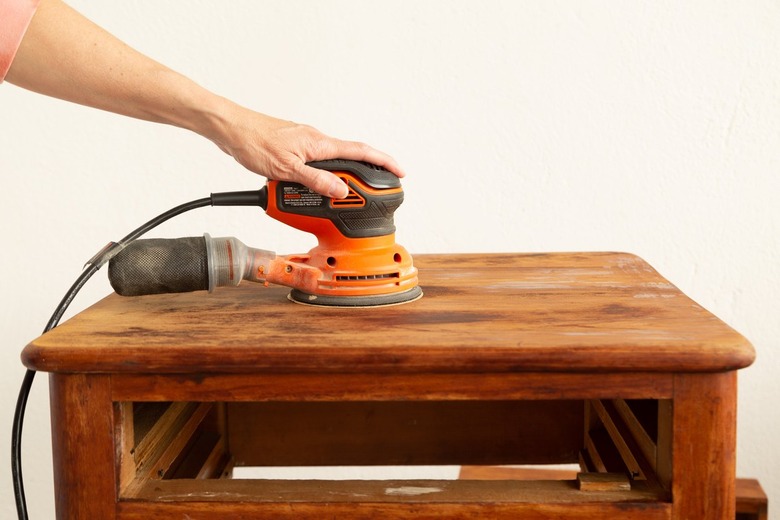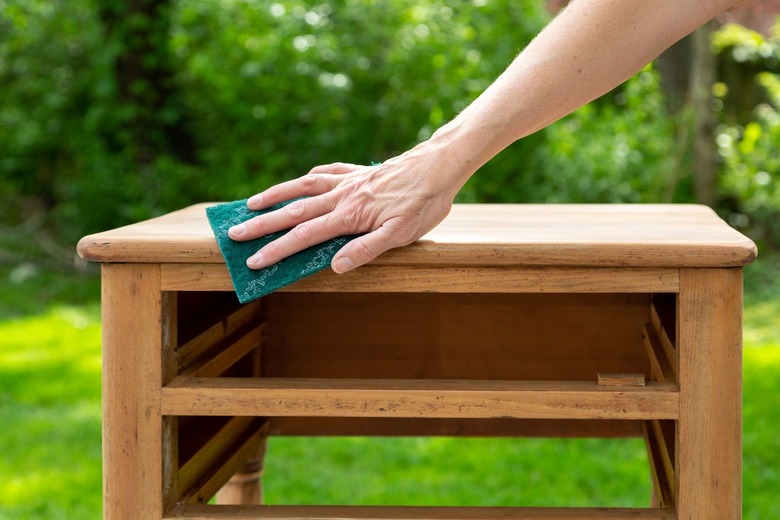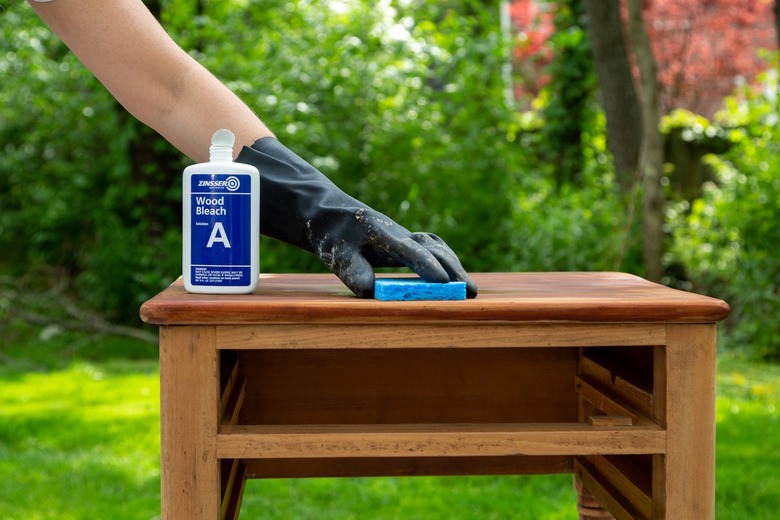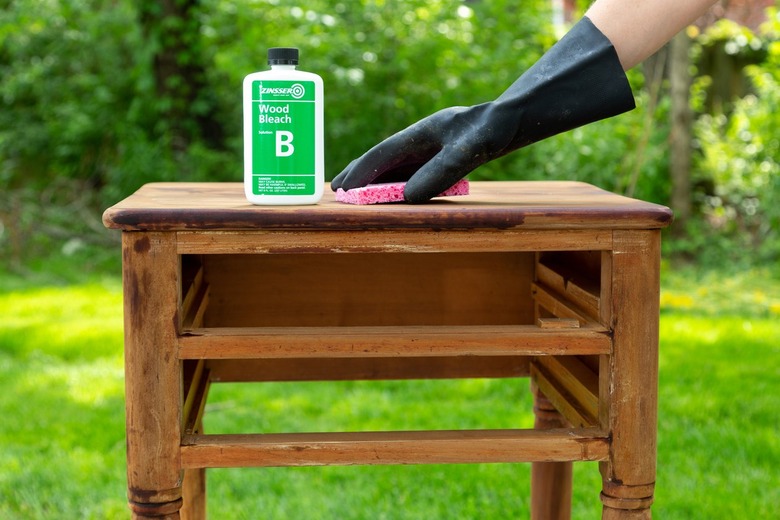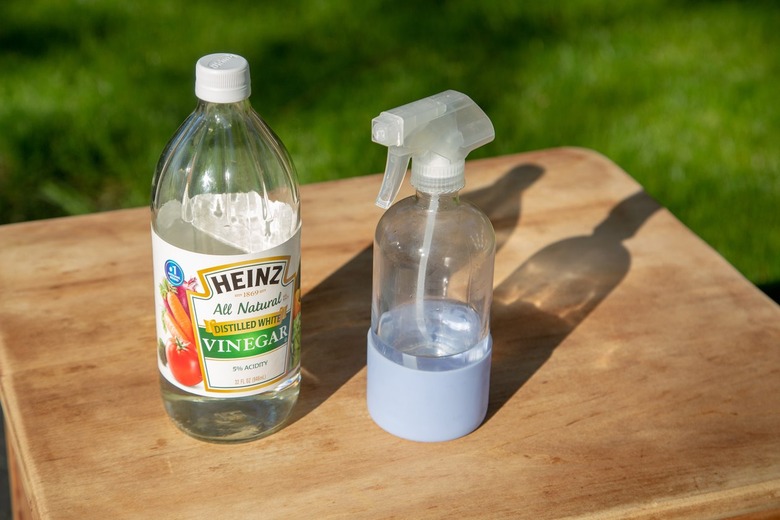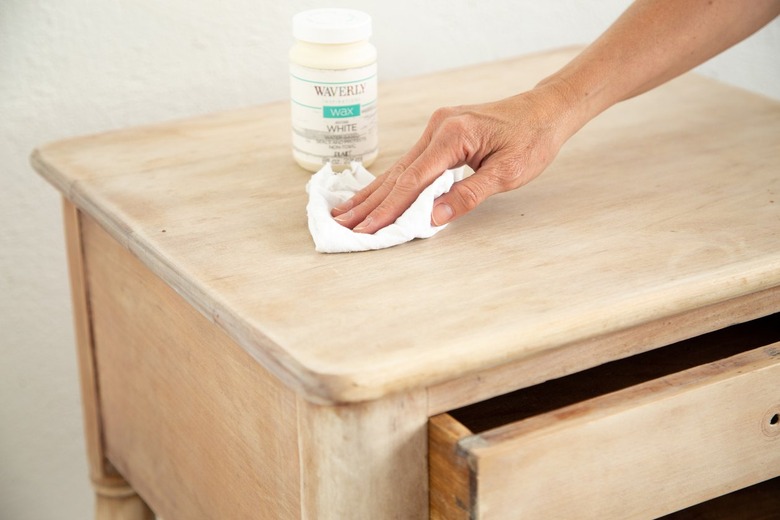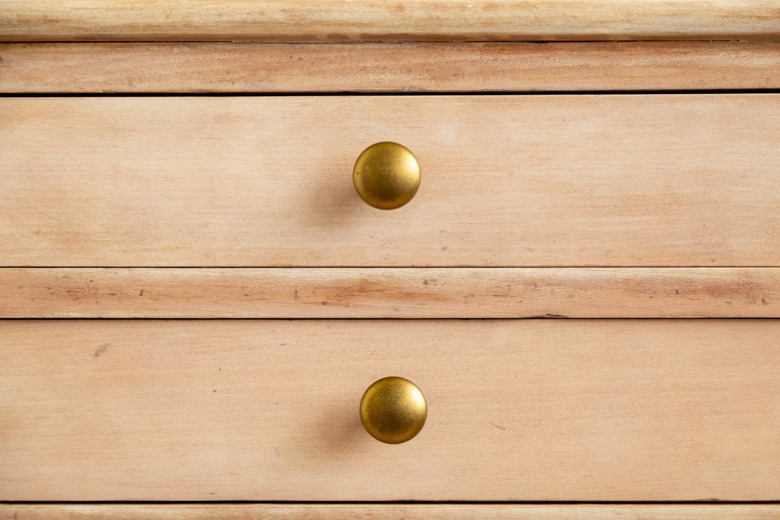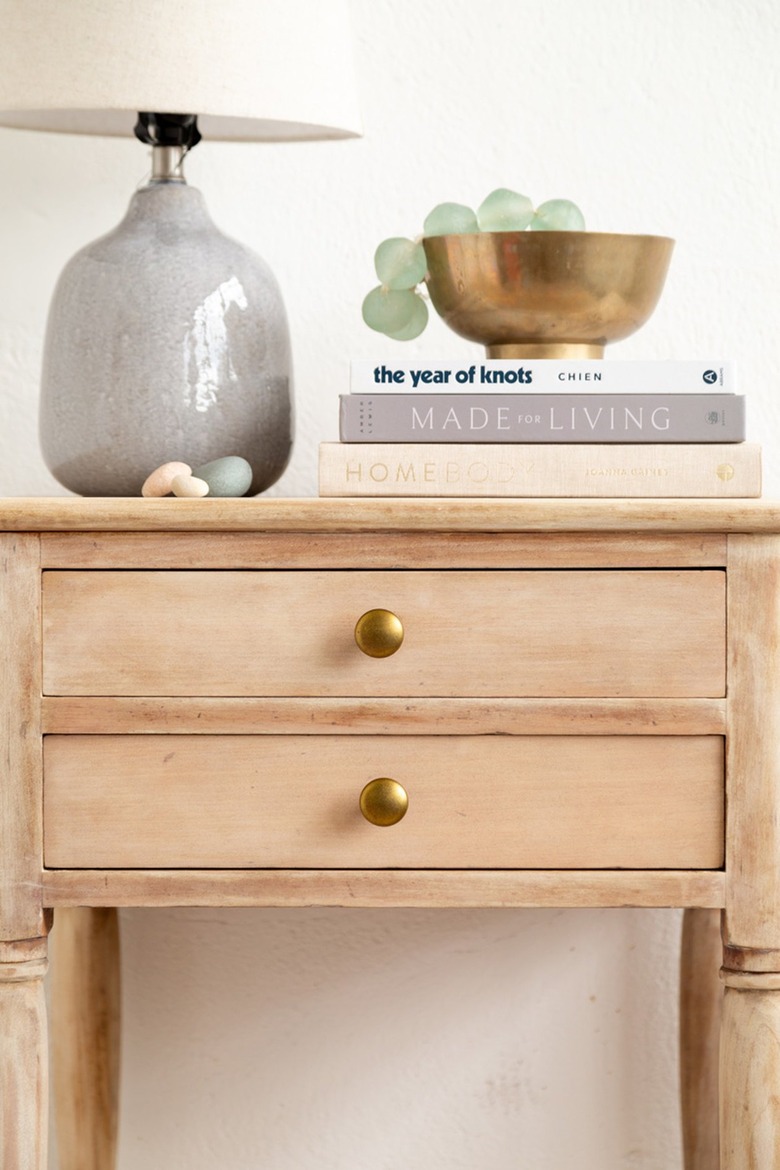How To Bleach Wood Furniture
We may receive a commission on purchases made from links.
Natural, rustic, and aged light wood furniture pieces are so on trend. You can find pieces anywhere from Shoppe Amber Interiors to Pottery Barn. We are completely smitten by the light wood look.
For this project, we use a cherry side table that we found at an antique shop in Southern Michigan. Now, to be honest cherry wood is not the easiest to bleach. Typically oak, beech, ash, and pine are the easiest to bleach as they are a lighter wood to begin with. If you want to lighten a darker red wood, you have to do the bleaching process multiple times. Pro tip: bleach your wood piece outside in the sunshine. The sunlight will speed up the bleaching process!
There are multiple ways to bleach wood. You can use household bleach, oxalic acid, or the two-part A/B wood bleach. We have used the two-part A/B wood bleach before and really like how it works. Two-part A/B peroxide-based bleach is a sodium hydroxide and hydrogen peroxide. Using these together causes a chemical reaction that ultimately creates a bleach that will remove the wood color.
Things Needed
-
Wood furniture
-
Rags
-
Sponges
-
White vinegar and water in spray bottle
-
Denatured alcohol and water in spray bottle
1. Find the perfect piece of furniture to bleach.
Be on the lookout at thrift or antique stores, Facebook Marketplace, and within your own home for a honey or darker wood stained piece of furniture. Wipe down the piece and remove any hardware.
2. Prep the table and apply stripping agent.
Apply the stripping gel to the entire table. Refer to the directions on the bottle for the instructions. (Be sure to use chemical-proof gloves.) Brush the stripping gel all over the table and wrap in a plastic drop cloth overnight.
3. Remove the stripping agent with a scraper.
Wearing gloves, remove the plastic wrap and start scrapping. Note: this gets messy. You can also use a small brush to get into any edges and details on the furniture.
4. Remove any remaining stripping agent.
Mix equal parts denaturalized alcohol water in a spray bottle and spray onto table. Wipe with rag, and then allow to dry overnight.
5. Sand the entire piece.
Use a power sander to get any remaining varnish from the table. You will have to use a little elbow grease to sand any detailed areas of your furniture.
6. Take the piece outside to prep for bleaching.
Wipe down with a rough sponge to remove any leftover residue from sanding.
7. Apply the first bleaching agent with a sponge.
Be sure to wear those gloves! Refer to the directions on the box. Use a sponge to wipe the bottle A liquid on the table. Let this seep into wood for five minutes.
8. Apply bottle B with a sponge.
Wipe the bottle B chemical on the table with a sponge. Allow to bleach for four hours.
9. Apply vinegar and water mixture to neutralize the table
We did the bleaching process three times to get my desired outcome. In between and at the end of the bleach process, we used a white vinegar and water mixture to spray on table.
10. Seal the table.
Seal the table with a polyurethane or a wax. We used a very small amount of white tinted wax paint to seal the table, and then wiped off with rag. If needed, add some new hardware (or paint old hardware) for a fresh look.
